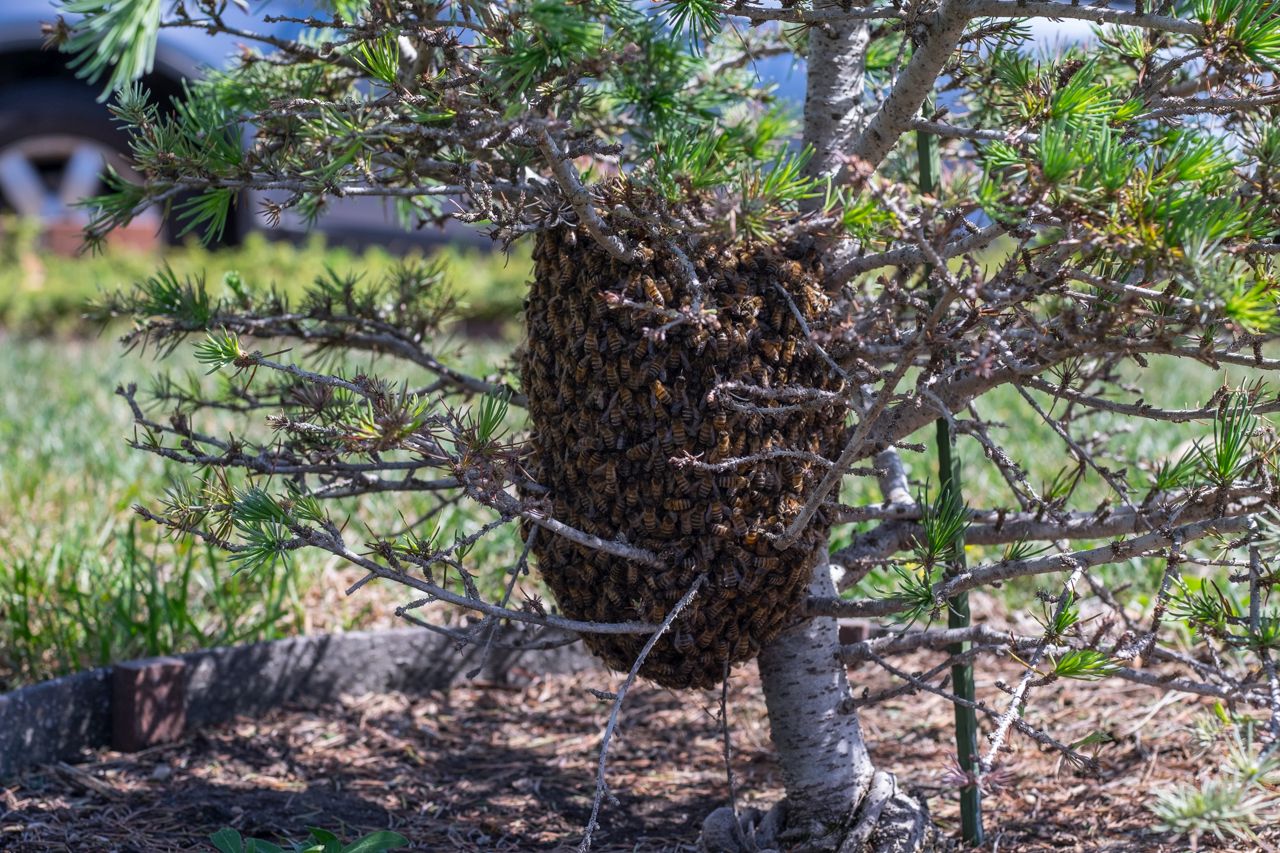 A family of friends of mine took a vacation in California, staying with family. They are the outdoorsy type and are into water events, although the water was very cold on this trip. It was the tail end of March. During their stay, they experienced a fascinating event. Grabbing a camera and laying on the ground, my friend memorialized the event. He took two snapshots. They are seen below, along with an image taken of the photographer himself. It was a spring honeybee swarm!
A family of friends of mine took a vacation in California, staying with family. They are the outdoorsy type and are into water events, although the water was very cold on this trip. It was the tail end of March. During their stay, they experienced a fascinating event. Grabbing a camera and laying on the ground, my friend memorialized the event. He took two snapshots. They are seen below, along with an image taken of the photographer himself. It was a spring honeybee swarm!

Honeybee Swarm Mechanism
Like a plant that grows by producing an offshoot, a nest of bees may divide with a mature or older queen leaving the original nest, taking a large percentage of the worker bees with her in order to create a new hive. They travel perhaps twenty or more miles to a temporary new resting-place. A young queen and some of the workers remain behind. This assures a healthy increase in bee colonies, keeping hives reasonably sized. What you see in the photos below are not bees over an enclosure, but a solid blob of bees! They remained for five days only, while scout bees found a suitable new location. The colony then departed as they came.
What Risks are Involved?
It must be obvious my friend felt he was at a safe distance from the bees, since is not dressed in protective garb. Unless provoked, the bees in a honeybee swarm will be centered on the task at hand. Yet caution demands the bees should not feel threatened in any way, as they are protecting their queen.
Intervention
If a honeybee swarm is discovered, a beekeeper may be called to gather it up for installation into a manmade hive so it can be used for honey production.
Note: You might also enjoy Is It a Honeybee? Is It a Bumblebee? No, It’s a Carpenter Bee
References:

The social insects are absolutely amazing!